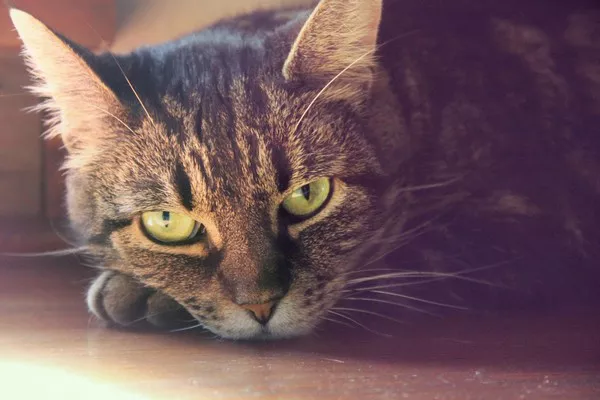Cats are notorious for their finicky eating habits, but when it comes to their urinary health, the right diet can make a significant difference. Urinary tract issues are common in cats and can range from mild discomfort to serious health problems like urinary tract infections (UTIs) and urinary crystals. One of the key components of managing and preventing these issues is selecting the right cat food. In this article, we will explore the importance of wet cat food for urinary health and provide guidance on how to choose the best options available.
Understanding Urinary Health in Cats
Before diving into the specifics of cat food, it’s essential to understand why urinary health is crucial for cats. The feline urinary system can be prone to several conditions, including:
Urinary Crystals and Stones: These are mineral deposits that can form in the bladder or urinary tract, leading to discomfort and potentially serious blockages.
Urinary Tract Infections (UTIs): Bacterial infections that can affect the bladder or urethra, causing inflammation and discomfort.
Feline Lower Urinary Tract Disease (FLUTD): A broad term used to describe conditions affecting the bladder and urethra, including crystals, stones, and infections.
Proper nutrition plays a critical role in managing these conditions and reducing the risk of recurrence. Wet cat food, in particular, offers several benefits over dry food when it comes to urinary health.
Benefits of Wet Cat Food for Urinary Health
Wet cat food has higher moisture content compared to dry kibble, which is beneficial for urinary tract health in several ways:
Increased Water Intake: Cats are notoriously poor drinkers, and many do not consume enough water to maintain optimal urinary health. Wet cat food’s high moisture content helps to increase overall water intake, keeping the urinary system properly flushed and reducing the concentration of minerals that can contribute to crystal formation.
Lower Magnesium Levels: Magnesium is a mineral that can contribute to the formation of urinary crystals and stones. Wet cat food formulations often have lower magnesium levels compared to dry food, which can help reduce the risk of crystal formation.
See Also: Why Am I Allergic to Calico Cats?
Acidification of Urine: Some wet cat foods are formulated to promote urine acidification, which can help dissolve certain types of crystals and prevent their formation.
Reduced Risk of Obesity: Obesity is a risk factor for urinary tract issues in cats. Wet cat food often has fewer carbohydrates and fewer calories per serving compared to dry food, which can help maintain a healthy weight and reduce the risk of obesity-related urinary problems.
Key Ingredients to Look for
When selecting a wet cat food for urinary health, several key ingredients and nutritional factors should be considered:
Protein Source: High-quality animal protein sources such as chicken, turkey, and fish are essential for cats. Look for named protein sources at the top of the ingredient list.
Low Ash Content: Ash content refers to the mineral content of the food. Lower ash content is generally preferable for urinary health, as high ash levels can contribute to urinary crystals.
Controlled Mineral Levels: Controlled levels of minerals such as calcium, phosphorus, and magnesium are crucial. Excess minerals can contribute to crystal formation.
Added Moisture: Look for wet cat foods with high moisture content, ideally around 70% or more. This helps ensure adequate hydration and urinary tract health.
Urine pH Control: Some specialized urinary health diets control urine pH to prevent crystal formation. Diets that promote a slightly acidic urine pH (around 6.0 to 6.5) are often recommended.
Choosing the Right Wet Cat Food
With so many options available, choosing the best wet cat food for urinary health can be overwhelming. Here are some tips to help you make an informed decision:
Consult Your Veterinarian: If your cat has a history of urinary tract issues or if you’re unsure about which food to choose, consult your veterinarian. They can recommend specific diets based on your cat’s individual needs.
Read Labels Carefully: Look for wet cat foods that are specifically formulated for urinary health. Check the ingredient list and guaranteed analysis for protein sources, ash content, and mineral levels.
Consider Your Cat’s Preferences: Cats can be picky eaters. If possible, offer small portions of different brands or flavors to see what your cat prefers while still meeting their urinary health needs.
Monitor Your Cat’s Response: Once you’ve chosen a wet cat food, monitor your cat’s urinary habits and overall health. Look for signs of increased water intake, improved litter box habits, and any changes in urinary frequency or discomfort.
Transition Gradually: When switching to a new wet cat food, introduce it gradually over 7-10 days to avoid digestive upset.
Popular Brands and Products
Several brands offer wet cat foods specifically formulated for urinary health. Here are some popular options:
1. Hill’s Prescription Diet c/d Multicare Urinary Care Chicken & Vegetable Stew
2. Royal Canin Veterinary Diet Urinary SO in Gel Canned Cat Food
3. Purina Pro Plan Focus Adult Urinary Tract Health Formula
These brands offer a range of wet cat food options tailored to different urinary health needs, including dissolution of urinary crystals and prevention of recurrence.
Conclusion
Choosing the best wet cat food for urinary health involves understanding your cat’s specific needs and selecting a diet that supports urinary tract function. Wet cat food is generally beneficial due to its high moisture content, lower mineral levels, and ability to promote urine acidity. By consulting with your veterinarian and considering key nutritional factors, you can make an informed decision to support your cat’s urinary health and overall well-being. Remember to monitor your cat’s response to the new diet and make adjustments as needed. With the right diet and proper care, you can help your cat enjoy a healthier urinary tract and a happier life.

























